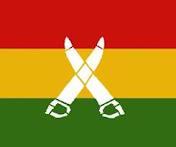Tag Archive: Mela Gadri Babian Da
Theatre and documentary filmmaking are luxuries in Punjab for those who watch them. And for those who pursue them, they are vocations, which do not promise many dividends.
The Desh Bhagat Yaadgar Hall, hub of leftist activity in Jalandhar, is one such place that recognises the importance of both.
The hall library is abound in literature – print and otherwise – that sells like hotcakes during the Mela Ghadari Babeyan Da. But it’s comparatively meagre, yet important. The collection in audio-visual segment is a revelation for all who have seen or heard about it.
The library has ample recordings for the first screenings of many plays by Punjabi masters, which debuted at the hall, but later went on to become huge hits throughout the state. These plays are picked up and staged at theatre and youth festivals year after year.
Amolak Singh, the convener of the cultural wing of the Desh Bhagat Yaadgar Hall, said 10 documentaries in their collection are of the path-breaking kind that are significant reflections of the people’s movements and issues influencing the state.
The documentaries are mostly screened during the mela and in industrial set-ups or villages for the benefit of labourers or rural folk, who highly appreciate them.
“Labourers at the industrial screenings love these and take keen interest. This is stuff for the people at the grassroots level. Urbane crowds are not as much interested in them as the labourers. At the festivals, too, we notice people coming in from far and wide but those from Jalandhar are relatively few in number. It’s a strange city. Seems like it doesn’t want to get sensitised of the ground realities in the countryside,” said Singh.
Talking about the documentaries in the hall’s collection, he mentioned Daljit Ami’s Aman Aur Zulm, Har Mitti Kutteyan Nai Bhurdi; Ajay Bhardwaj’s Ek Minute Ka Maun; Rajiv’s Apna Paash and Harvinder Diwana’s Khetan De Putt Jaag Paye.
‘Ek Minute Ka Maun’ talks about the 1994 movement by the students in Bihar against increase in fees. The documentary is a hit with the migrant labourers.
‘Har Mitti Kutteyan Nai Bhurdi’ talks about the two-and-a-half-year-long people’s movement, which happened when Kiranjit Kaur of Mahal Kalan village was raped by the son of the village big shot.
“It was a historic movement. Women blocked traffic. As many as people from 50 villages participated in the protests. Thousands of people used to gather. The protesting crowds cooked food themselves and fought on till the accused were punished,” Singh elaborated.
The documentary ‘Apna Paash’ talks about the revolutionary poet and is the only documentary to have been made on Paash in Punjab so far. With Paash as its basic thought, the documentary voices the opinion that the state and Khalistan are two sides of the same coin.
It features interviews with Paash’s mother, father, sister, brother-in-law, aunt and historians Gursharan Singh and Bhai Manna Singh.
‘Khetan De Putt Jaag Paye’ is a documentary on the one-and-a-half-year-long struggle of the peasants of the Channan, Dhaula and Sanghera villages near Barnala, where a land of 365 acres was acquired without the consent of the farmers.
“False fards were made. Standing crops were destroyed just to ensure the acquisition of the land. Children couldn’t study because schools were closed. But the farmers fought on. Three people were killed but finally they got justice. The peasants were given Rs 20 lakh for an acre of land,” Singh said.
Among the plays, he mentioned Kewal Dhaliwal’s ‘Lal Batti’, ‘Dharmguru’, ‘Kudesan’, the controversial ‘Medhni’, ‘Itihaas De Safe Te’; Pali Bhupinder Singh’s ‘Main Bhagat Singh Haan’; Prof Ajmer Aulakh’s ‘Lohe Da Putt’, ‘Aise Jan Virle Sansaare’, ‘Begaane Bohr Di Chaan’, ‘Nikke Nikke Surjan Di Larayi’; Rajbir’s ‘Pyasa Kaan’ and Madiha Gauhar’s ‘Bulla’.
Talking about Medhni, he says, “The play was a huge risk but thankfully it went peacefully.” It talked about the black episode where an eminent politician allegedly got her daughter killed for honour.
The play ‘Kudesan’ is the story of a truck driver who buys a migrant woman and brings her home when her wife is not able to bear him a son.
So how popular are the plays among the festival crowds? “During 2010’s Mela Ghadri Babeyan Da, we sold CDs worth Rs 22,000. People love them. Take them to homes. Show them to their families,” Amolak Singh said.




